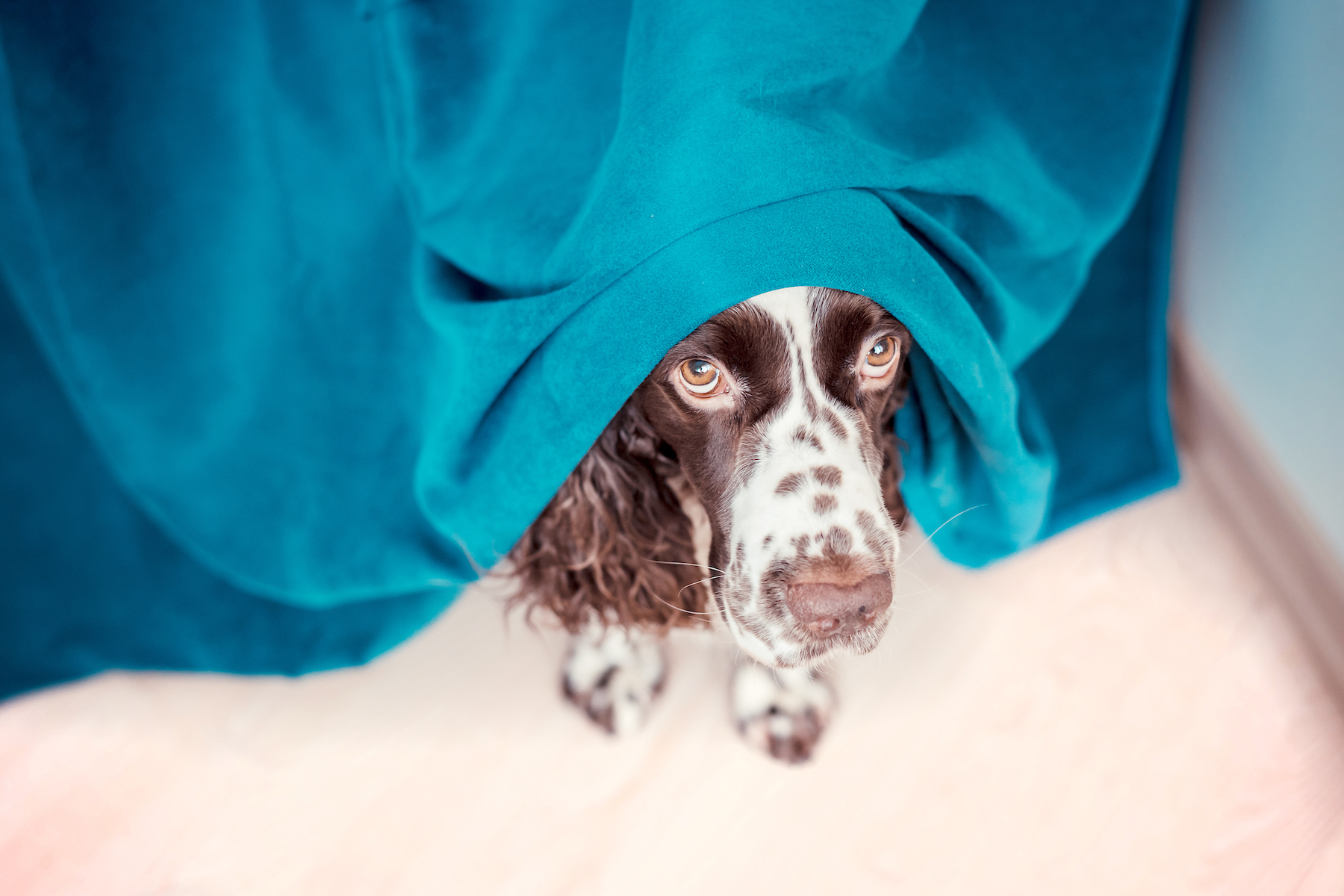
Storm phobia is the fear of thunder and lightning, which can affect people of all ages. However, did you know that pets could also be affected by this phobia?
Why Are Pets Scared of Storms?
 Experts don’t fully understand the exact cause of pet storm anxiety. However, countless studies have indicated how a combination of factors can lead to pet storm anxiety.
Experts don’t fully understand the exact cause of pet storm anxiety. However, countless studies have indicated how a combination of factors can lead to pet storm anxiety.
An Early Experience
Generally speaking, a phobia is an uncontrollable anxiety disorder that involves the persistent and overwhelming fear of a particular object, situation, place or feeling. This extreme form of fear or anxiety can be triggered by various factors like stress. Some phobias, however, develop after experiencing a frightening, traumatic event. Being trapped in an elevator, for example, can trigger the development of claustrophobia. Studies have revealed that people have the capacity to develop certain emotions or phobias when they have a scary experience with a particular thing or situation. The same goes for pets. Sometimes, all it takes is a bad experience during a storm to instill fear or anxiety in a pet.
For instance, if a pet was physically abused by its owner during severe weather, the dog would then recall that traumatic experience whenever there is severe weather.
A Normal Response
The positive side of fear is that it creates an immune response in the body. It makes you alert to danger and prepares you to deal with it. Feeling afraid is helpful in some situations. The same applies to pets during storms. During storms, fear creates a need for pets to seek shelter and protection.
In a work called “Pets on the Couch”, Dr. Nicholas Dodman, speaks up about the physiological responses to anxiety and fear that are similar in both humans and pets:
“The amygdala, the brain’s Grand Central Terminal for both fear and anxiety, lights up on PET imaging scans in anxious and fearful animals and people. The long-term memory center, the hippocampus, is also involved in propagating the response. Connections between the amygdala, hippocampus, and hypothalamus facilitate release of stress hormones, like epinephrine and cortisol. Epinephrine increases heart rate, blood pressure, and the caliber of the respiratory passages…. In addition, endorphins are released in reaction to fear. So in both people and nonhuman animals, the same neurotransmitters are released in brain regions that deal with anxiety and similar behaviors result.”
In addition, with thunderstorms, the rapid expansion of the air surrounding the lightning bolt creates loud grumbles and growls. Some pets, especially dogs, are very sensitive to loud noises like fireworks, coffee grinders, gunshots and thunder rolls and these sounds can contribute to a negative feelings in pets.
Another Form of Fear or Anxiety
One aspect of fear or anxiety disorders is that they have a tendency to develop phobias or trigger excessive and persistent fears and anxieties about other things or situations. In other words, when a person already has an anxiety or fear disorder, it can trigger your brain and increase the likelihood of experiencing other forms of anxiety or fear. The same goes for animals.
If your cat or dog already struggles with social anxiety or separation anxiety, for example, hearing loud lightning and thunder noises may aggravate his fear. There are many pets that are diagnosed with anxiety disorders or fear of the unknown and when these pets hear the thunder rumbling or detect changes in temperature or scents, they may start having a strong negative reaction to the storm. Such reactions were also often noticed in human beings.
What Are the Signs of Pet Storm Anxiety?
 Here are the responses or behaviors your pets might exhibit if they have storm phobia:
Here are the responses or behaviors your pets might exhibit if they have storm phobia:
- When your pets are pacing back and forth, it means there is something that’s stressing them.
- It’s normal, for example, for dogs to pant. But, heavy panting during thunderstorms is a sign of pet storm anxiety.
- Some pets shake and tremble when they are anxious or scared.
- Anxiety and fear can create abnormalities in parts of the brain that control bladder function. Therefore, involuntary urination is a symptom of pet storm anxiety.





